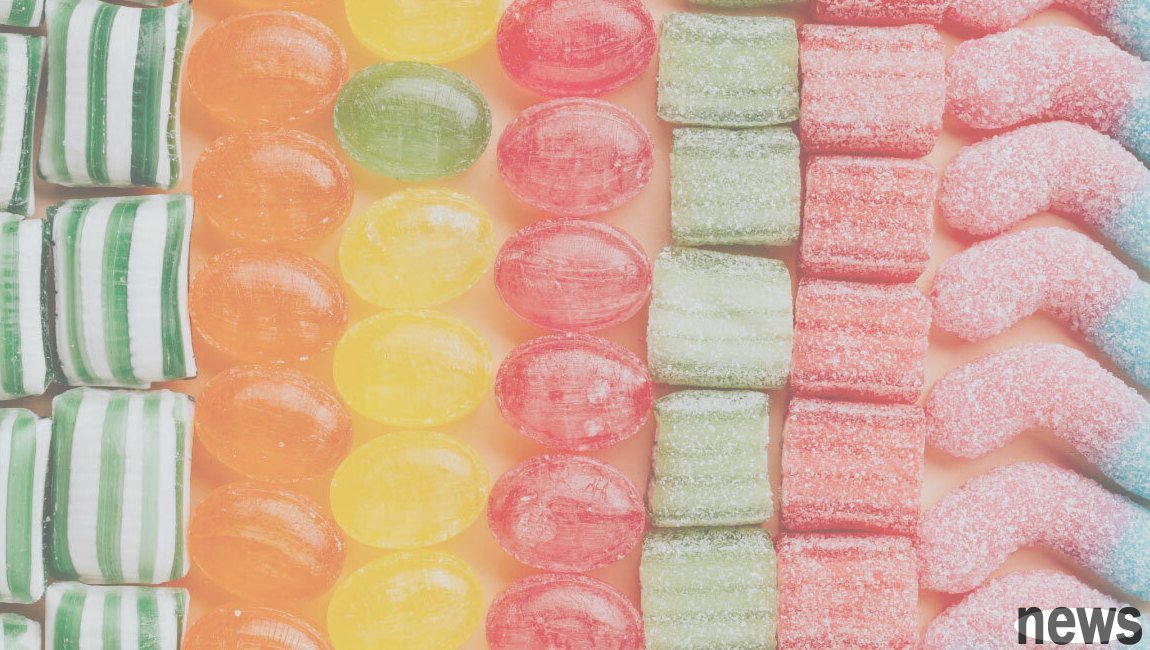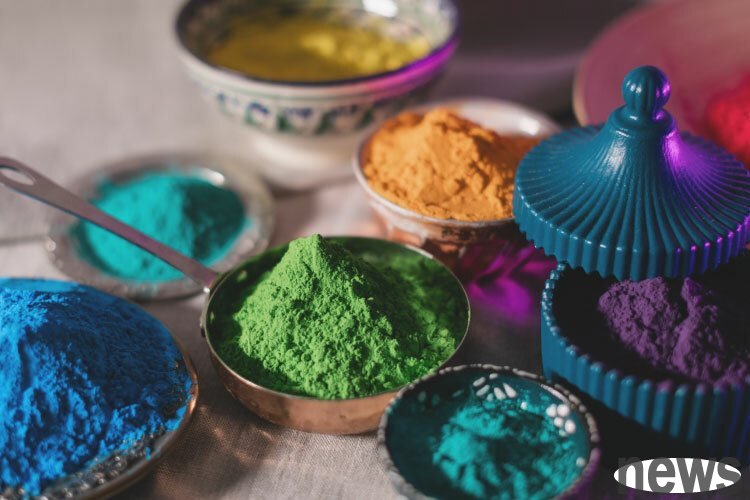
You can see the New Year's themes and the limited time of the season from all over the streets. The candy candy candy in the Christmas Festival and the red rice cakes of the New Year. Among them, candy candy candy candy candy candy candy candy candy, in addition to the classic red stripes on the white background and red green white, there are also orange, blue and green stripes, and even colorful ones! The sweetness of such colorful colors often makes children fall in love with each other as soon as they get it. They always think that one is not enough, the more the better!
However, with the modern health awareness, many parents have begun to ban children from eating candy, hoping to reduce the impact of sugar and various food additives on them, and food coloring is also one of the key points that everyone cares about. What are the functions of pigments? Does it have any impact on health? Let's take a look now~
, it may be extracted from plants or microorganisms, or obtained from natural environments. The extracted pigments are usually unstable and are easily affected by processing processes such as acid, storing, and heat. For example, anthocyanins show different colors at different pH values and are easily damaged by heat; while artificially synthesized pigments can be roughly divided into two types, one is to produce naturally occurring pigments through artificial synthesis or manufacturing, and the other is to produce pigments produced by coal tar or other materials as raw materials, and have the advantages of coloring, strong coloring power, and cheap prices.The uses of pigments are quite widespread. Some pigments can be added to food as food pigments, while others can only be used for industrial purposes. Currently, "food pigments" approved by Taiwan are managed in a positive form (meaning that only the items available in the announcement can be used in food, and all of them are prohibited). Food pigments are divided into two categories: natural food pigments and colorants according to their source and process.
Natural food coloring and coloring agent 1. Natural food coloring: Natural food coloring must comply with the "Natural Food Coloring Hygiene Standard" regulations. There are relevant regulations for extraction solvents, stylus and other additives. The content of arsenic, penis and heavy metals is also limited in terms of specifications. The source of each pigment must comply with the regulations. For example, red beet pigment comes from the root of red beet, graceful seeds from red wood, licorice pigment comes from the root of licorice or other similar plants, and leaves yellow can only be obtained by extracting and condensing from alfalfa.
Currently, there are 46 types of projects approved for use in Taiwan, of which 40 pigments are plant-based sources (such as anthocyanins, graceful, phytonus blue pigments, licorice pigments, plant charcoal, etc.), 3 pigments are animal sources (rogue, phytonus pigments and crab pigments), and 3 pigments are microbial sources (green algae pigments, red koji pigments and blue algae pigments).
*The source of rouge is female rouge, pill pigment and crab pigment is the shell of pill and crab, so these three pigments are not vegetarian.

2. Coloring agent: In addition to the 46 types of substances listed in the current natural food coloring hydration standard table, other food coloring agents that can be used are all in the food additives-coloring agents, and must comply with the "Food Additives Use Range and Limited and Specification Standards". There are currently 35 types of substances, including gold, caramel pigments, copper leaf greens, edible yellow No. 5 and β-Hushu, etc. Among them, artificial synthetic pigments using coal tar as raw material include Red No. 6, Red No. 7, Red No. 40, Yellow No. 4, Yellow No. 5, Green No. 3, Blue No. 1, Blue No. 2 and its pigment aluminium base.
*Aluminum Lake: Combining pigments with metal salts (such as aluminum) can increase color durability and make pigments oil-soluble from water-soluble. Therefore, this type of pigments all contain aluminium, such as: red No. 6 Aluminum Layer, yellow No. 4 Aluminum Layer, etc.
Why should food coloring be added to food? There are usually several purposes:
. Beauty: Adding food coloring to make food look better and improves consumers' purchasing intentions. In addition, the color of some foods will change during processing, making the finished color dim and unattractive. Using food coloring can adjust the color of the food back to its original color or a more attractive appearance.
. Standardize finished products: The color of food is affected by raw materials and processing processes, which may cause color difference between each batch of finished products. Adding food coloring can make the color of each batch of finished products consistent, avoiding consumers from misunderstanding the poor quality of food.
. Convenient identification: Adding food coloring can facilitate consumers to identify food tastes (such as colored fruit candies, beverages, etc.), or different types of capsules.
. Other uses: In addition to adding color to food, some food coloring also have other uses, such as: nuclein (vitamin B2) also has the function of nutrient additives; anthocyanins, β-hululin and lemons can antioxidant.
Will food coloring affect health? After having a preliminary understanding of food coloring, I believe some people will be curious whether these food coloring (especially synthetic pigments) will affect health? Among them, the most concerned thing is whether artificial synthetic pigments using coal tar as raw materials are related to children's Attention Deficit Hyperactive Disorder (ADHD)?
According to the current research results, there is no relevant evidence that artificial synthetic pigments using coal tar as raw materials are the hands of ADHD, but the correlation between them is not ruled out. A small number of studies have recommended that artificial synthetic pigments may increase the risk of ADHD.. But it's like food allergies. Some people are more sensitive to high doses of food coloring due to different personal quality, but others do not have behavioral effects or other adverse reactions.
Since food coloring only accounts for a small part of the general diet, and the current food safety and hygiene-related regulations have relevant regulations on food coloring products, usage scope and limits, so when choosing food, selecting products with clear and qualified labels can reduce the risk to extremely low; if you really don’t want to eat synthetic pigments, you can also refer to the ingredients list on the food packaging and choose products that use natural food coloring or do not contain food coloring.
With the healthy consciousness, the idea of eating more natural foods and less processed foods is becoming more and more popular. Natural and unadditive foods are more likely to gain consumers' trust and support, which has enabled many manufacturers to improve processing technology, and to replace artificial ingredients with more natural food raw materials, and gradually reduce unnecessary food additives. , which includes replacing synthetic pigments with natural food pigments. Perhaps such products may not necessarily be as beautiful as before in color, but as long as consumers can have more understanding of the primary color of food and the color changes after food processing, and no longer pursue a fresh and lusty appearance, the use of synthetic pigments by food manufacturers may gradually decrease in the future.
This article is authorized by "PrimePlus Health Designer", and reprinting is prohibited without permission